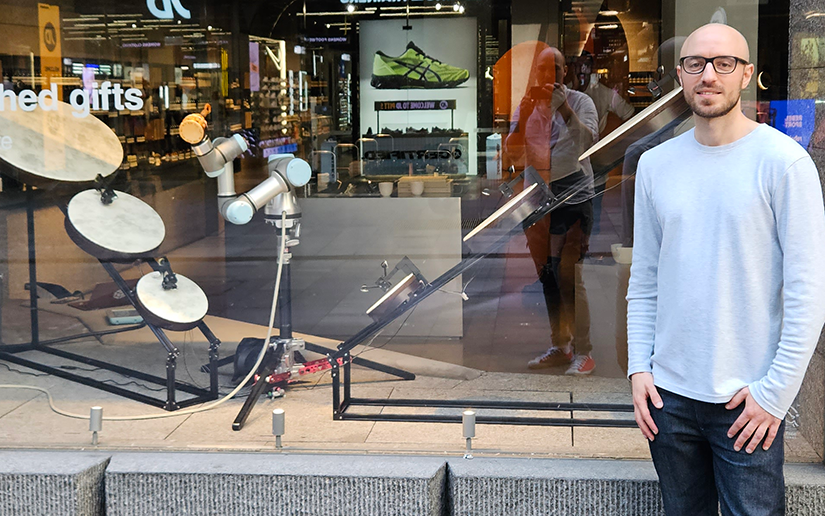This is article written by Robyn Barden from UTS and originally published via the UTS website Giving cobots the human touch through biomimicry | University of Technology Sydney (uts.edu.au)
An Australian Cobotics Centre roboticist is raising awareness of collaborative robots and biomimic research in a mechatronic musical installation where the lead percussionist is a collaborative robot.

UTS robotics researcher, Dr Fred Sukkar, has taken his research out of the lab and onto the streets with a robotic percussion ensemble display in Sydney’s CBD, a collaborative installation with the University of Technology Sydney, Australian Cobotics Centre, Macquarie University and Aesop Sydney.
Based in Aesop Sydney store, the installation with an industrial edge responds autonomously to music played in the store.
Six mechanical drums play along to music while the leader of the ensemble, a collaborative robot (cobot), shakes a basket-woven caxixi or ‘dances’ to the beat.
“When the store plays music the system listens and extracts information, such as the rhythm and tempo, then the ensemble plays along in an interactive way to compliment the music,” said Dr Sukkar, an Australian Cobotics Centre postdoctoral research fellow based at the UTS Robotics Institute.
For the cobot to learn how to play the caxixi, Dr Sukkar used motion capture cameras and reflective markers to record a human percussionist, then the robot replicates this movement.
“My biomimic cobots research aims to transfer skills to robots through human demonstration,” he said.
“The idea of translating human motion to a cobot is useful in our industry projects for intuitively teaching new skills and ultimately integrating cobots more naturally into workplaces.” Dr Sukkar said, the mechanised ensemble was conceptualised and constructed by Dr Richard Savery, a developer of artificial intelligence and robotics and research fellow at Macquarie University.
“Richard combines music with robotics in a creative way to evoke human emotion.”
The cobotic musical installation was at the Aesop Sydney store, located in Pitt St Mall and was on display for 3 weeks until 19 November 2023.


